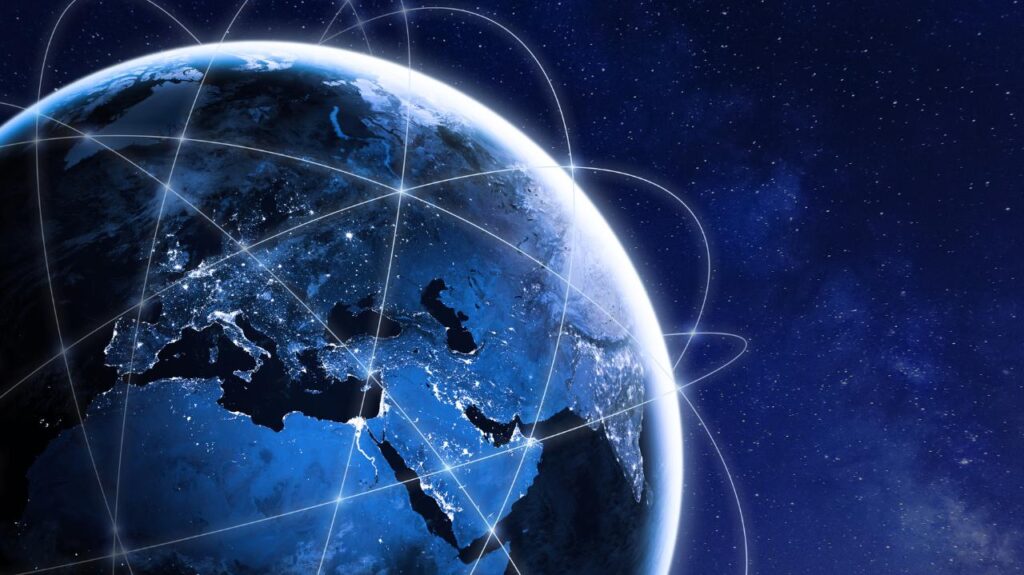Space exploration has transitioned from a scientific and geopolitical challenge to a rapidly expanding economic sector. The year 2023 set a record for investments in the space industry, with a total of $242 billion allocated to the sector, according to Space Capital.
From Geopolitical Rivalry to Economic Boom
Interest is no longer confined to major government agencies like NASA, ESA, and the Chinese Space Agency, but now includes an increasing number of private companies, such as SpaceX, Blue Origin, and Rocket Lab, which are redefining access to space. However, this growing economy raises a fundamental question: does it make sense to invest billions in space missions while Earth faces climate, health, and economic emergencies?
Italy’s role in the growing space Industry
In this context, Italy stands out as one of the main players. In 2021, the country invested €4.6 billion in the space sector, ranking sixth in the world for space expenditures relative to GDP. The Italian space industry, comprising approximately 220 companies—including large corporations, SMEs, and startups—excels in the design and construction of artificial satellites and space modules. Italy also plays a crucial role in the Artemis program, which aims to return humans to the Moon by 2026, contributing to the construction of the Lunar Gateway, a future space station in lunar orbit.
The Private Sector’s Increasing Involvement
Beyond scientific and strategic aspects, space has become a key market for private industry. According to the Satellite Industry Association report, 75% of the global space industry is tied to satellites, directly impacting telecommunications, GPS navigation, climate monitoring, and national security. SpaceX’s Starlink project, which aims to bring satellite internet to every corner of the planet, has already become one of the most significant global infrastructure assets, providing connectivity to remote regions and crisis zones such as Ukraine during the conflict with Russia.
The Rise of Space Mining
Another emerging sector is space mining. The idea of extracting rare metals from asteroids, long theorized, is becoming a tangible objective for companies like AstroForge and TransAstra. According to NASA estimates, the main asteroid belt between Mars and Jupiter contains resources worth $700 quintillion (700,000,000,000,000,000,000,000—an unimaginably large figure). However, space mining raises political and legal questions: who owns the resources of an asteroid? The 1967 Outer Space Treaty prohibits sovereign ownership of celestial bodies, but new legal interpretations are emerging to regulate this industry.
Human Colonies: a new frontier
Simultaneously, space exploration paves the way for new frontiers, including the possibility of establishing human colonies beyond Earth. Projects such as the Artemis lunar base or SpaceX’s proposed Mars missions are no longer mere science fiction. Elon Musk has stated his goal of sending the first human crew to Mars by 2030, envisioning a self-sufficient colony within a few decades. However, the immense technical challenges and astronomical costs make these projects highly speculative.
The balance between public and private investments is another crucial aspect. NASA remains the primary financier of space research, with a budget of over $25 billion for 2024. However, it increasingly collaborates with private companies to reduce costs and increase efficiency. The Artemis program, aiming to return humans to the Moon, relies heavily on SpaceX for the lunar lander and Boeing for the development of the SLS rocket. These public-private partnerships are reshaping the role of institutions in space, making it an increasingly hybrid sector.
Ethical and Economic Debates on Space Investments
As previously mentioned, the expansion of space activities raises ethical and economic questions. Critics argue that the vast resources allocated to space exploration could be used to address urgent problems on Earth, such as poverty and climate change. Some accuse governments of using public funds for ventures that do not provide immediate benefits to humanity.
On the other hand, space exploration offers tangible benefits for everyday life. Technologies developed for space missions have applications in telecommunications, meteorology, and medicine. Additionally, Earth observation from space enables environmental monitoring and improved natural resource management.
On a geopolitical level, space has become a new arena of competition among global powers. China, India, and Europe are accelerating their space programs to close the gap with the United States. China, in particular, has ambitious plans with its Tiangong space station and the Chang’e lunar exploration missions. This scenario raises new concerns about the militarization of space and the risk of an arms race. The recent creation of the U.S. Space Force and tests of anti-satellite weapons demonstrate that space is no longer just a scientific laboratory but also a strategic battlefield.
The Challenge of Space Sustainability
Finally, the sustainability of space activities is a crucial issue. The increasing amount of space debris poses a threat to future missions and orbital infrastructure. The European Space Agency (ESA) has set a goal of preventing new debris from accumulating in strategic Earth orbits by 2030, promoting sustainable practices within the industry.
Additionally, ESA is working on active debris removal missions, such as the ClearSpace-1 project, which aims to eliminate fragments of old satellites in orbit to reduce collision risks. The proliferation of private satellites, like those from Starlink and OneWeb, has made space regulation even more urgent to prevent a congested and hazardous orbital environment for future navigation.The space economy is growing at an unprecedented pace, blending scientific ambitions, economic opportunities, and geopolitical rivalries. The future of space exploration will depend on how humanity manages this expansion, balancing technological innovation with sustainability, regulation, and ethical considerations.

